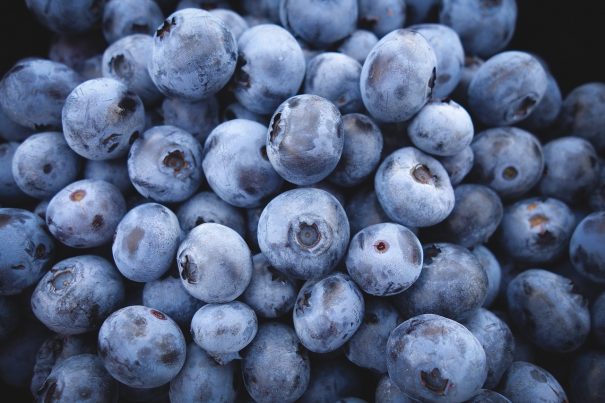
Blueberries – sources, health benefits, nutrients, uses and constituents at NaturalPedia.com
Wednesday, June 21, 2017 by Frances Bloomfield
http://www.naturalpedia.com/blueberries-sources-health-benefits-nutrients-uses-and-constituents-at-naturalpedia-com.html

The blueberry is a well-known summertime fruit that has become more famous as a superfood in recent years. The second most-consumed berry in the United States is low in calories yet rich with nutrients. In the United States, there are two common types of blueberries and both are equally healthy. Highbush blueberries are the larger, more widely-grown variety in the country, while “wild” or lowbush blueberries are smaller and more dense with certain antioxidants.

List of known nutrients
Anthocyanins are flavonoids and antioxidant pigments that give the blueberry its hue, and are thought to be responsible for the beneficial health effects of the fruit. These antioxidants protect the body from the damaging effects of free radicals, which are unstable molecules that weaken cellular structures and put the body at a higher risk of disease. Blueberries have a variety of phytonutrients aside from anthocyanins, and these include:
- Anthocyanosides
- Bioflavonoids
- Glycosides
- Proanthocyanidins
- Quercetin
The other nutrients found in blueberries are:
- Copper
- Fiber
- Manganese
- Potassium
- Riboflavin
- Vitamin A
- Vitamin C
- Vitamin E
Medicinal uses for blueberries
If consumed regularly, blueberries can lessen the risk of:
- Alzheimer’s disease
- Arthritis
- Atherosclerosis
- Colic
- Colitis
- Constipation
- Cystitis
- Diarrhea
- Gastroenteritis
- High cholesterol
- Intestinal infections
- Macular degeneration
- Raynaud’s disease
- Rheumatoid arthritis
- Sore throat
- Ulcerative colitis
- Urethritis
- Urinary tract infections
Blueberries contain very few calories and carbohydrates, and have no known negative effects when eaten in large amounts. Those who want to eat as many blueberries as they want for maximum health benefits are free to do so. Note: the deeper the color of the blueberries, the better they are since these are the blueberries with the most amount of medicinal nutrients.
Body systems supported by blueberries
The antioxidants, minerals, and vitamins in blueberries can benefit:
- Brain
- Bones
- Blood
- Digestive system
- Eyes
- Heart
- Immune system
- Liver
- Nervous system
- Skin
- Vision
Since blueberries significantly lower the damage done by free radicals, they support these organs and systems at the cellular level. The brain is especially vulnerable to oxidative stress, which in turn accelerates the brain’s aging process and can inhibit brain function; blueberries cam delay the stress brought about by age-related decline and maintain or even improve brain function.
Ways to use blueberries
Apart from doing well in ice creams, smoothies, and other cool summer foods, blueberries can also be added to desserts. Their famously sweet, tangy, tart, and fresh flavor have made blueberries popular to use in pies, cakes, muffins, and cobblers. Blueberries can also be mixed into cocktails or punch bowls for more formal occasions.
It should be noted, however, that blueberries keep their maximum amount of nutrients as fresh fruits, as high temperatures can damage these nutrients. To get the most antioxidants and vitamins out of blueberries, take them as is.
Where to learn more
- Blueberries May Take Care of Your Belly Fat
- Blueberries Improve Memory, Slow Aging and Much More
- Blueberries halt hardening of the arteries
- Blueberries A Powerful Superfood
- Blueberries control high cholesterol and prevent colon cancer
Summary
Blueberries are 85 percent water, so most of their nutritional benefits is found in the skin.
With their high amounts of antioxidants and antioxidant compounds like vitamin C, blueberries are good for eye health, preventing macular degeneration, eye dryness, and retina infections.
The plant nutrients found in blueberries have imbued them with antibacterial and antiviral properties.
Anti-adhesives in blueberries stop bacteria such as E. coli from clinging to the wall of the bladder, making blueberries effective in the prevention of urinary tract infections.
Blueberries are ideal for diabetic patients because they’re full of fiber, a nutrient essential for improving and regulating blood sugar, lipids, and insulin levels.
Sources include:
AuthorityNutrition.com
MedicalNewsToday.com
WHFoods.com
OrganicFacts.net
BonAppetit.com
Tagged Under: Tags: Blueberries





